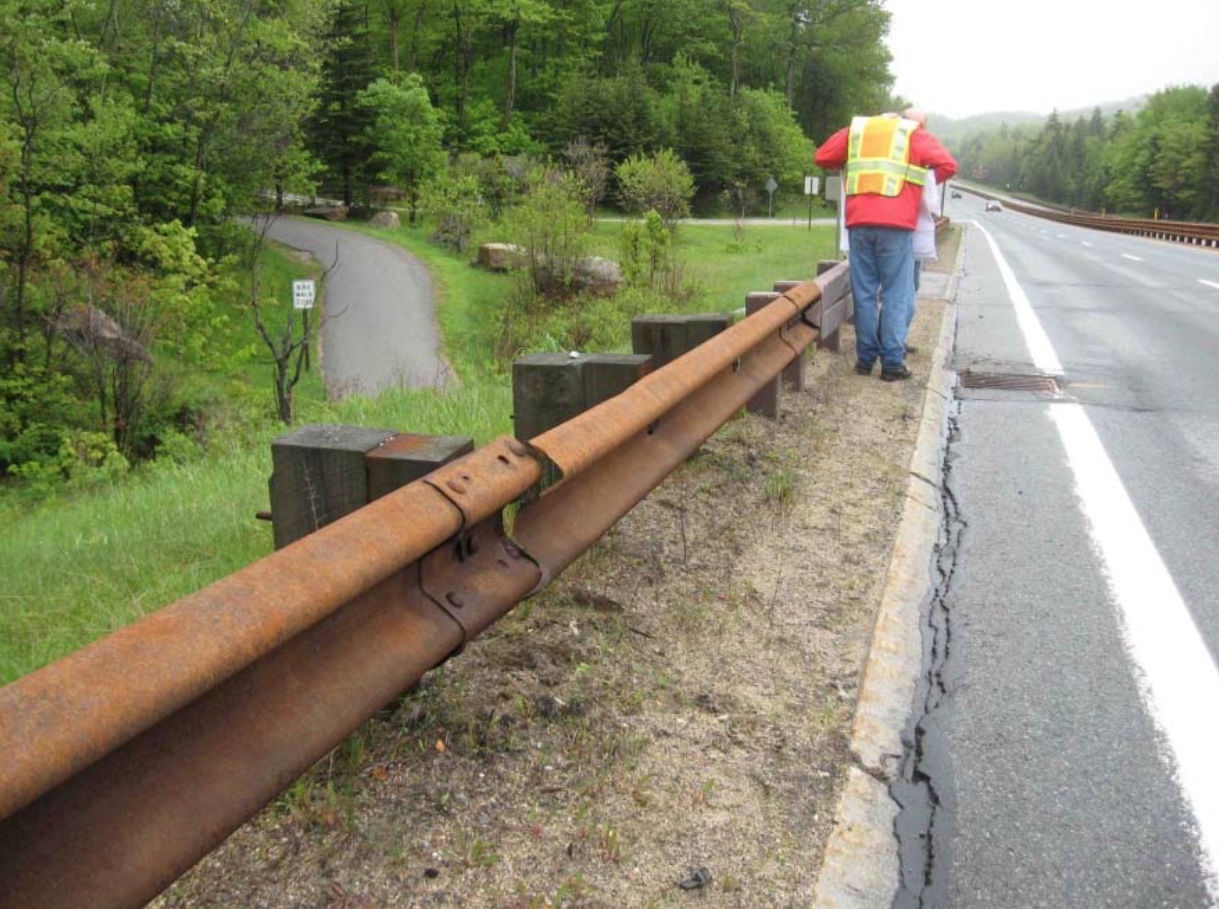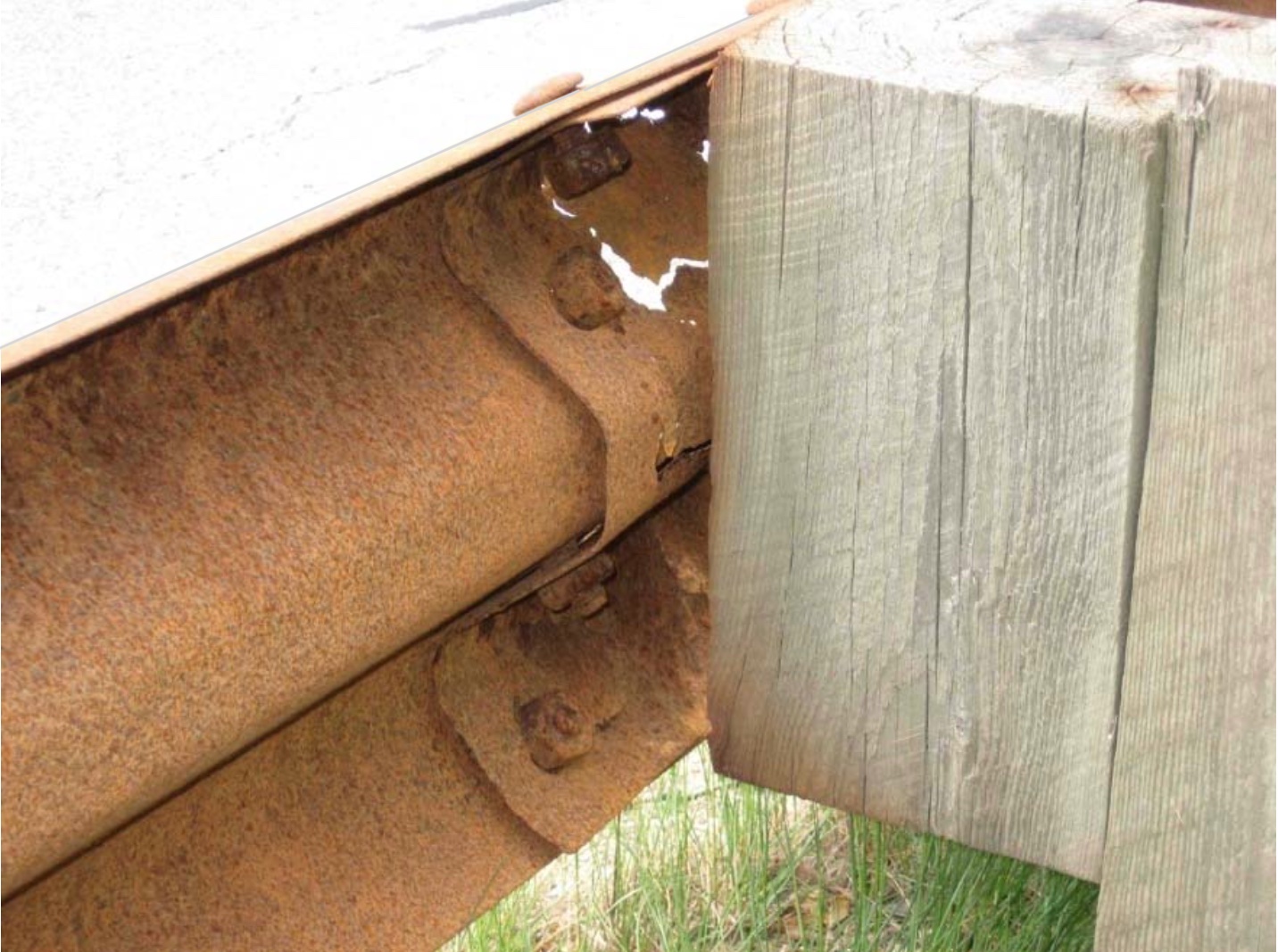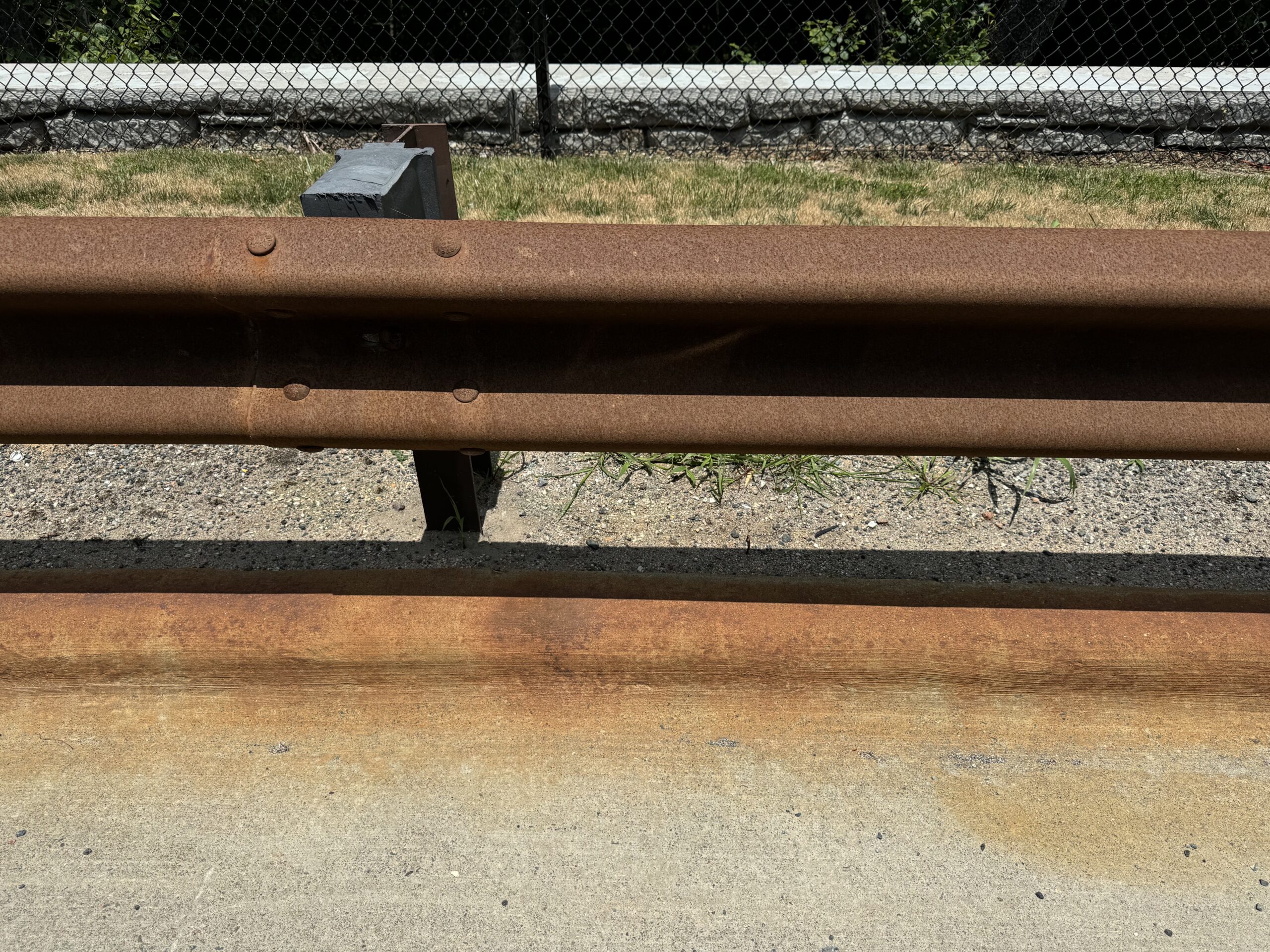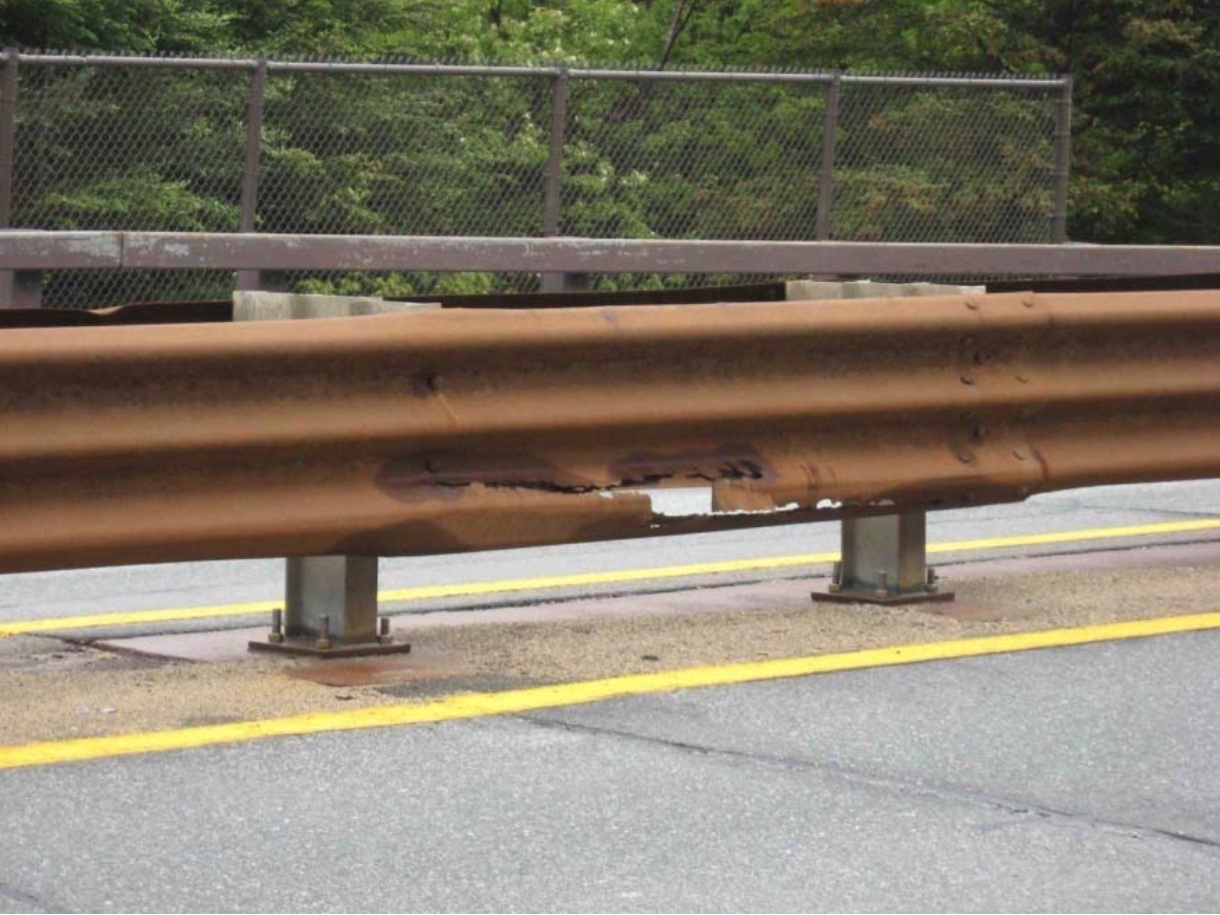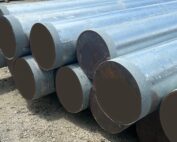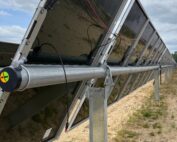A 2009 survey conducted by the New Hampshire Department of Transportation (NHDOT) studied the conditions of weathering steel guardrails that had been in service for 10 to 20 years. It discovered a shocking overall failure rate of 25% at the midspan and a failure rate between 50%-71% at connection points. The report also noted that galvanized steel guardrail exposed to the same environments, with an equal number of years in service, showed no decrease in strength or function, and that the galvanized rail became less shiny, allowing it to better blend into its environment over time.
Mike Hazlett, a Senior Engineer with NHDOT, responded to these findings by stating: “Without an intensive maintenance/replacement commitment, this (weathering steel) rail all too quickly moves from being a physical barrier to a visual barrier as far as effect on errant vehicles.” As a result, New Hampshire has become one of many US states that has considered the safety of its citizens and chosen to no longer use weathering steel guardrails along its roadways.
Though there are states that still permit the use of weathering steel, it is not considered to be a sustainable choice in any area that receives eight or more inches of precipitation per year. According to the most recent available American Community Survey (a yearly review conducted by the U.S. Census Bureau) average annual precipitation in the United States was 30.28 inches, with the highest recording state receiving 59.15 inches of precipitation and the lowest recording state receiving 9.46 inches of precipitation.
In addition to providing a shorter effective life span, weathering steel guardrail also bleeds rust on the surfaces beneath it. It’s not a pretty sight. To better protect your projects, your people, and your budget, the proven choice is galvanized steel.
